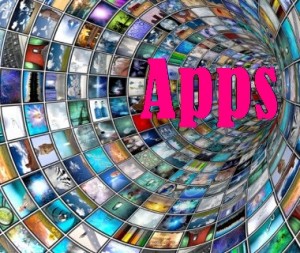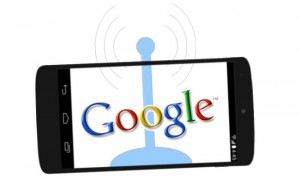A recent study determined that 280 million people are launching their applications many times each day.
A new report from Flurry has been released and what it showed was that there is a considerable group of people that they are labeling “mobile addicts” due to the number of times that their mobile apps are launched within any given day.
What they found was that 15 percent of smartphone and tablet users are launching their applications very often.
In fact, the Flurry report showed that those 15 percent are launching mobile apps at least 60 times per day. This meant that they fell into the category of mobile addicts, as defined by the firm, and that there are an estimated 280 million of them around the world. These 280 million people are continually using and launching applications in their mobile devices. Though this may not sound like very much when compared to the complete global population, keep in mind that it is 15 percent, which means between one and two out of every 10 people could fall into this category.
In fact, the number of people launching mobile apps at that rate is equivalent to one of the most populous countries.
 Two hundred and eighty million people is the same number as the fourth most populated country on the planet, only slightly behind the population of the United States. When considering that mobile addicts could make up the fourth most populated country in the world, it starts to put things into perspective with regards to the usage of these devices and how much some people are actually using them.
Two hundred and eighty million people is the same number as the fourth most populated country on the planet, only slightly behind the population of the United States. When considering that mobile addicts could make up the fourth most populated country in the world, it starts to put things into perspective with regards to the usage of these devices and how much some people are actually using them.
Furthermore, the mobile addicts usage group is also the one that has the largest growth in terms of its own population. In fact, over the last year, the number of people who would fall into that group grew by a massive 59 percent.
Among the primary drivers of this very high rate of usage of mobile apps is messaging and social applications. Those are the types of app that are launched 6.6 times more frequently than are used by the average smartphone or tablet user that is not considered to be an addict.
The tech giant will be compatible with Bluetooth LE devices and will compete directly with Apple’s device.
Google has now announced its new open-source platform, Eddystone, for devices with Bluetooth LE, and that will make it possible to communicate with other compatible devices such as smartphones.
This will also place the company in direct competition with the iBeacon from Apple.
The Eddystone platform is the latest addition to the geolocation marketplace, which is an integral component to the Internet of Things (IoT) ecosystem. The use of this type of technology could potentially enable a great deal more in terms of contextual services that are available within the actual physical world. The use of beacon tech makes it possible for low-power Bluetooth enabled gadgets to effectively transmit information to smartphones and other similar mobile devices.
Eddystone and other beacons can’t track a smartphone, but the mobile device can detect the beacons.
 Once a smart device has detected a beacon, it is capable of receiving data from it. The user of the mobile device has control over what type of data he or she wants to receive by way of the settings that have been allowed in the apps that have been downloaded. Based on those settings, the smartphone chooses which beacon information will trigger a response within the mobile device.
Once a smart device has detected a beacon, it is capable of receiving data from it. The user of the mobile device has control over what type of data he or she wants to receive by way of the settings that have been allowed in the apps that have been downloaded. Based on those settings, the smartphone chooses which beacon information will trigger a response within the mobile device.
Apple was the very first tech company to step into that form of geolocation and integrate the capability with its iOS 7. At the start, the primary focus for this technology was essentially geared toward retail. Since then, there has been notable growth in the adoption of these beacons among major retailers such as Lord and Taylor’s and Macy’s. Equally, McDonald’s and Starbucks have also used this location based tech in some locations. In the majority of instances, the tech is used to transmit specific promotions, or deals to consumers based on their specific location within a store.
While the outcomes have been mixed, so far, Eddystone is entering into this space at a very early time in its existence and there remains a tremendous amount of potential for innovation, growth and usage.
 Two hundred and eighty million people is the same number as the fourth most populated country on the planet, only slightly behind the population of the United States. When considering that mobile addicts could make up the fourth most populated country in the world, it starts to put things into perspective with regards to the usage of these devices and how much some people are actually using them.
Two hundred and eighty million people is the same number as the fourth most populated country on the planet, only slightly behind the population of the United States. When considering that mobile addicts could make up the fourth most populated country in the world, it starts to put things into perspective with regards to the usage of these devices and how much some people are actually using them.
 Once a smart device has detected a beacon, it is capable of receiving data from it. The user of the mobile device has control over what type of data he or she wants to receive by way of the settings that have been allowed in the apps that have been downloaded. Based on those settings, the smartphone chooses which beacon information will trigger a response within the mobile device.
Once a smart device has detected a beacon, it is capable of receiving data from it. The user of the mobile device has control over what type of data he or she wants to receive by way of the settings that have been allowed in the apps that have been downloaded. Based on those settings, the smartphone chooses which beacon information will trigger a response within the mobile device.